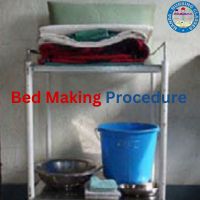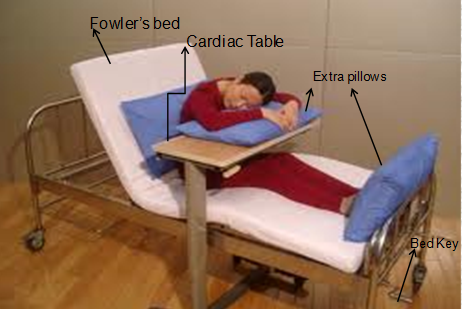Hemoglobin test at home testing requires perfection to perform. By reading the full page, you will get all the information regarding “Hemoglobin Test at Home.” Hemoglobin tests (Hb) are crucial diagnostic tools used to measure hemoglobin levels in the blood, which is vital for determining an individual’s overall health. This guide provides an in-depth overview of the Hb test procedure, particularly in community settings, highlighting its significance, steps, and related information to ensure clarity and effectiveness.

Definition of Hemoglobin Test
A hemoglobin test measures the amount of hemoglobin, a protein in red blood cells that carries oxygen throughout the body. This test is essential in diagnosing and monitoring conditions like anemia, polycythemia, and other blood disorders.
Types of Hemoglobin Tests
- Complete Blood Count (CBC): Includes hemoglobin as part of a broader analysis of blood components.
- Hemoglobin Electrophoresis: Identifies different types of hemoglobin to detect abnormalities.
- Point-of-Care Hemoglobin Test: Quick and convenient tests using portable devices, often performed in community settings.
Benefits of Hemoglobin Tests
- Early Diagnosis: Detects anemia, polycythemia, and other blood disorders promptly.
- Monitors Treatment Progress: Helps in tracking the effectiveness of therapies.
- Promotes Health Awareness: Encourages timely medical intervention for underlying health issues.
- Convenient in Community Settings: Portable testing methods enhance accessibility.
Procedure for Hemoglobin Test (Hb) in the Community
Preparation:
- Hygiene and Safety:
- Wash hands thoroughly and wear gloves.
- Ensure all equipment is sterilized and disposable items are ready.
- Gather Required Materials:
- Lancets or needles.
- Test strips (for portable devices) or collection tubes.
- Alcohol swabs and gauze.
- A hemoglobin testing device or lab requisition form.
How to Take a Hemoglobin Sample:
For Finger-Prick Method:
- Clean the Area:
- Use an alcohol swab to clean the fingertip.
- Pierce the Skin:
- Use a lancet to prick the side of the fingertip.
- Collect the Blood:
- Wipe away the first drop with sterile gauze.
- Collect subsequent drops using a capillary tube or onto a test strip.
- Test or Store:
- Place the blood sample into a portable hemoglobin testing device for immediate results or into a collection tube for laboratory analysis.
For Venous Blood Collection:
- Locate a Vein:
- Apply a tourniquet and identify a suitable vein in the arm.
- Draw Blood:
- Use a sterile needle and collection tube to draw the sample.
- Label and Transport:
- Label the sample appropriately and send it to a laboratory.
Result Interpretation:
- Portable Devices: Results are displayed within minutes.
- Laboratory Tests: Results are typically available within a few hours to days.
Normal Hemoglobin Values
- Men: 13.8 to 17.2 g/dL
- Women: 12.1 to 15.1 g/dL
- Children: 11 to 16 g/dL
- Newborns: 14 to 24 g/dL
How to increase Hemoglobin
To naturally increase hemoglobin levels at home, you can incorporate the following strategies into your daily routine:
Iron-Rich Foods
- Include iron-rich foods such as spinach, kale, red meat, poultry, fish, beans, lentils, and tofu in your diet.
- Pair these foods with vitamin C-rich items like oranges, tomatoes, or bell peppers to enhance iron absorption.
Increase Folate Intake
- Folate, a B vitamin, is essential for producing red blood cells. Eat foods like leafy greens, avocados, citrus fruits, and fortified cereals.
Add Vitamin B12 Foods
- Consume eggs, dairy, fortified cereals, and meat to support red blood cell production.
Avoid Iron Blockers
- Limit tea, coffee, and calcium-rich foods during meals as they can interfere with iron absorption.
Stay Hydrated
- Dehydration can lower hemoglobin levels. Drink adequate water daily to maintain blood volume.
Supplementation (If Needed)
- If dietary changes aren’t sufficient, consider iron or folic acid supplements. Consult a healthcare provider before starting supplements.
Cook with Iron Utensils
- Cooking in cast-iron pots can increase the iron content of your meals.
Exercise Regularly
- Moderate exercise can stimulate red blood cell production. Focus on activities like walking, jogging, or yoga.
By incorporating these steps, you can support healthy hemoglobin levels naturally. If levels remain low despite these efforts, seek medical advice for further evaluation.
Conclusion
Hemoglobin testing is a fundamental aspect of healthcare that enables early detection and management of various conditions. Community-based testing ensures accessibility and awareness, empowering individuals to take charge of their health.
Also, read Antenatal Physical Examination
FAQs
What is the primary purpose of a hemoglobin test?
To measure hemoglobin levels and identify blood disorders such as anemia.
Can dehydration affect hemoglobin test results?
Yes, dehydration can lead to falsely elevated hemoglobin levels.
How often should hemoglobin levels be checked?
Frequency depends on individual health needs; consult a healthcare provider.
Are there side effects from a hemoglobin test?
Minimal side effects may include slight bruising or soreness at the puncture site.
What should I do if my hemoglobin levels are abnormal?
Seek medical advice to determine the underlying cause and appropriate treatment.



